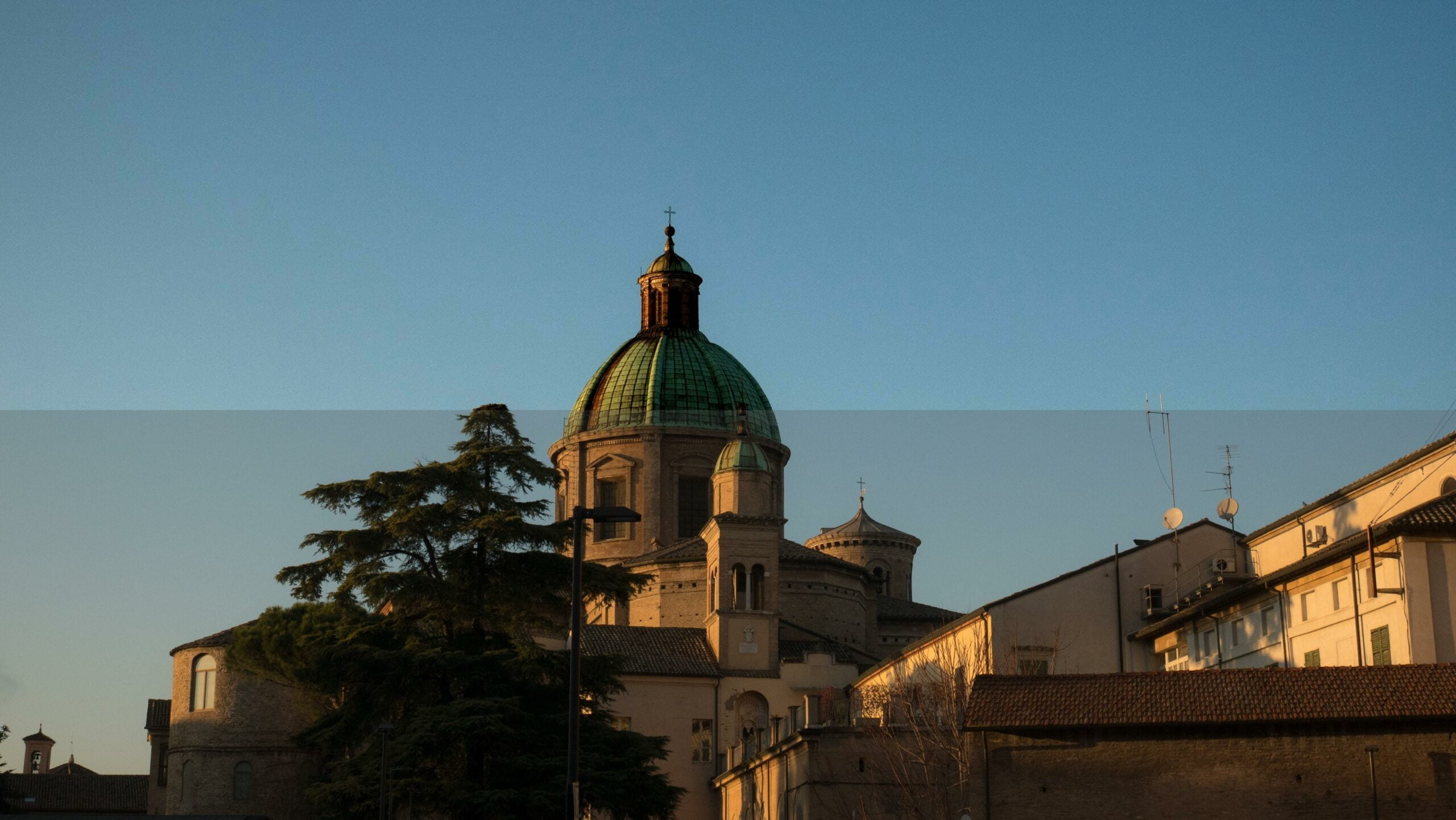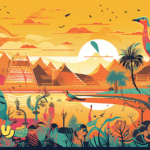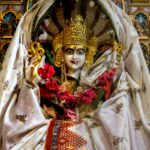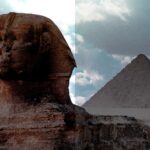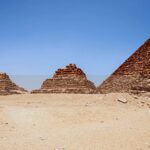Welcome to a mesmerizing journey into the realm of ancient Egyptian mythology. In this article, we will delve deep into the captivating story of Ra’s creation myth. As a research specialist and writer with a profound passion for mythology, my goal is to unveil the enchanting layers of this myth and provide readers with a comprehensive understanding of the ancient Egyptian belief system. Prepare to be transfixed by the tale of Ra’s creation and the profound significance this deity holds in their cosmology. Get ready to embark on an extraordinary exploration of the Story of Ra Creation Myth.
The Story Of Ra Creation Myth
The ancient Egyptians held a deep reverence for the sun, and at the heart of their belief system, stood Ra, the god of the sun and creation. The enchanting tale of Ra’s creation myth reveals the fascinating origins of this powerful deity and sheds light on the ancient Egyptians’ understanding of the universe and their place within it.
According to the creation myth of Ra, the world was a chaotic and formless place until Ra emerged from the primordial water known as Nun. In this myth, Ra is said to be self-created, born from a shining egg that rose from the darkness of Nun. The sun’s rays bestowed upon Ra the power of sunlight, making him the bringer of light and life to the world.
But Ra’s quest for order didn’t end with his own creation. He desired companionship and sought to bring balance to the universe. From his tears of happiness, Ra created humans, endowing them with the gift of life and the power to worship him. Additionally, Ra, in his divine wisdom, brought forth other deities. Yah, the moon, Geb, the earth, and Nut, the sky, each played a vital role in the Egyptian cosmology.
As the chief deity in ancient Egyptian mythology, Ra was worshipped as the god of the sun, creation, law, light, order, fertility, and growth. His influence extended far beyond the realms of divine power, shaping the religious beliefs and practices of an entire civilization.
The creation myths of ancient Egypt often revolved around the concept of Nun, the primordial water that existed before recognizable landscapes took shape. In this context, Ra’s emergence from Nun symbolizes the transition from chaos to order, an essential element in the Egyptian worldview. This captivating tale of creation provided the ancient Egyptians with a foundation for understanding the origins of their world and their connection to the divine.
In art and iconography, Ra is commonly depicted as a falcon-headed god, symbolizing his association with the sun. This visual representation adds to the enchantment and mystique surrounding Ra, captivating the imagination of those who encounter his myth. Through the ages, the story of Ra’s creation myth has continued to intrigue scholars, historians, and mythologists, allowing us to delve into the depths of ancient Egyptian culture and beliefs.
In conclusion, the story of Ra’s creation myth is a testament to the ancient Egyptians’ extraordinary imagination and their profound connection to the natural world. This fascinating tale reveals how Ra, the self-created god, brought order to the chaos of the universe. From his emergence from the primordial waters of Nun to the creation of humans and other deities, Ra’s story symbolizes the ever-present cycle of creation and the power of divine energy. Join me on a journey through the captivating world of the ancient Egyptian belief system, as we unravel the layers of Ra’s creation myth and uncover the mysteries of the cosmos. As the ancient Egyptians looked up towards the radiant sun, they saw the embodiment of Ra, and in his story, they found both inspiration and meaning. Let us now embark on this enchanting adventure and delve into the heart of ancient Egyptian mythology.
Egyptian mythology is filled with fascinating tales of gods, goddesses, and epic adventures. From the enchanting story of Ra, the sun god, to the daring journey of Isis to resurrect her beloved Osiris, the ancient Egyptians had a rich tapestry of myths that have captivated the imaginations of people for centuries. If you’re curious to explore these famous Egyptian myths, click here to embark on an adventure through the mystical world of ancient Egypt: famous egyptian myths.
The Tale of Ra and Creation
[youtube v=”BAyRDvv_RtQ”]
In ancient Egyptian mythology, Ra was not only the god of the sun but also the creator of the world. According to the creation myth, before Ra’s existence, the world was in a state of chaos. But from the primordial waters known as Nun, Ra emerged as a shining egg, bringing light and life to the universe.
Ra possessed immense power, and his words held great significance. By naming something, he could bring it into existence. With this ability, Ra created various elements of the world. He named the Rising Sun as Khepera, bringing forth the first day. He also named the evening, which became known as Aten.
Not only did Ra’s words create the world, but they also gave birth to his children, the gods and goddesses of mankind. He named the winds Shu and the first rains Temu, which fell upon the earth called Cab. The sky was known as Neb, and the River Nile flowed through the lands of Egypt. Ra’s creation extended to all living things upon the earth.
After creating mankind and all other living creatures, Ra observed his creation from above. However, as time went on, his people began to lose respect for him and disobey his laws. Concerned about this, Ra summoned a meeting with his children, the gods, to discuss the matter.
In the meeting, Ra asked the primordial being known as Nun for advice. Nun suggested that destruction and death be unleashed upon the people so that they would learn to fear Ra once again. Following Nun’s advice, Ra brought forth destruction, death, and war into the world. His daughter, Shekmet, became the lioness of destruction, causing havoc and slaughtering mankind.
Witnessing the bloodshed caused by Shekmet, Ra felt saddened and pitied his creation. He realized that even with his immense power, he could not stop the slaughter. In an effort to mitigate the chaos, Ra called upon his messengers, who brought beer and red oak from the lands of Egypt.
Ra commanded his men to flood the lands of Shekmet’s next battle with a mixture of beer and red oak. When Shekmet arrived, she found the lands empty of mankind and filled with the red liquid. Believing she had already completed her slaughter for the day, she began drinking the blood in celebration. The more she drank, the drunker she became.
Finally, Shekmet stumbled before Ra, her father, and this was the first day that she did not kill since her birth. Seeing Shekmet in this state, Ra understood that she came in peace. He transformed her into Hathor, the goddess of love, bringing peace back to the land.
Ra continued to rule mankind as the first Pharaoh for many years, but he aged like any other man. His mind deteriorated, and he became frail. In time, the younger gods, including Osiris, Isis, Set, and Nepthys, realized that if they were to rule mankind, they must learn the secret name that held Ra’s power. Isis, the wisest of the new gods, devised a plan to obtain Ra’s secret name.
Isis followed Ra and collected his spit to create mud. From this mud, she formed the first Cobra and left it in Ra’s path. When Ra passed, the Cobra bit him and escaped. Ra was in excruciating pain and sought relief. Isis offered to help but insisted on knowing his secret name. Eventually, Ra, unable to bear the pain any longer, revealed his secret name to Isis.
With Ra’s secret name, Isis cast a spell that relieved his pain. Finally, Ra ascended back to the heavens, taking his place as the Sun during the day and guiding the souls of the dead through the underworld at night.
The tale of Ra and creation is more than just a myth; it provides insights into ancient Egyptian culture and beliefs. The story symbolizes the transition from chaos to order, highlighting Ra’s power as the creator and the challenges faced by both gods and humans. As worshippers of Ra, the ancient Egyptians regarded him as the source of life and the bringer of light, law, and order.
“Ra’s emergence from Nun symbolizes the transition from chaos to order in Egyptian mythology.”
“The story of Ra’s creation myth continues to captivate scholars, historians, and mythologists, providing insights into ancient Egyptian culture and beliefs.”
FAQ
Question 1
What is the creation myth of Ra?
Answer 1
The creation myth of Ra describes how Ra, the chief deity in ancient Egyptian mythology, created his children Shu and Tefnut to bring order to the chaos of the universe. Ra is considered self-created and was born from a shining egg that arose from the darkness of the primordial water called Nun. The sun’s rays gave Ra the power of sunlight, and he created humans from tears of happiness. Ra also created other deities, such as Yah the moon, Geb the earth, and Nut the sky.
Question 2
What is the significance of Ra in ancient Egyptian cosmology?
Answer 2
Ra is worshiped as the god of the sun, creation, law, light, order, fertility, and growth. The creation myth of Ra is a central part of Egyptian mythology and has influenced their religious beliefs and practices. Ra’s association with the sun is symbolized by his depiction as a falcon-headed god. The concept of Nun, a primordial water that existed before recognizable landscapes, is often present in the creation myths of ancient Egypt.
Question 3
What role does Ra play in Egyptian mythology?
Answer 3
Ra is considered the chief deity in ancient Egyptian mythology and holds significant power and influence. He is the creator of the universe and is associated with the sun. Ra’s creation myth showcases his ability to bring order to the chaotic cosmos and his role in shaping the world. His creation of other deities and humans highlights his creative power and connection to fertility and growth.
Question 4
How does Ra’s creation myth influence ancient Egyptian religious beliefs?
Answer 4
The creation myth of Ra has a profound impact on ancient Egyptian religious beliefs. It illustrates the importance of order, light, and fertility in their cosmology. Ra’s role as the god of the sun and creation provides a foundation for understanding the significance of sunlight and growth. The creation of humans from tears of happiness emphasizes the divine nature of humanity and their connection to Ra.
Question 5
What role does the sun play in Ra’s creation myth?
Answer 5
The sun plays a crucial role in Ra’s creation myth. Ra is self-created and obtains the power of sunlight from the sun’s rays. This power enables him to bring order to the chaotic universe and to create life. The sun’s association with light, warmth, and growth symbolizes the life-giving properties that Ra possesses. It represents the vital force behind creation and the sustaining power of the cosmos.
- China II Review: Delicious Food & Speedy Service - April 17, 2025
- Understand Virginia’s Flag: History & Debate - April 17, 2025
- Explore Long Island’s Map: Unique Regions & Insights - April 17, 2025
